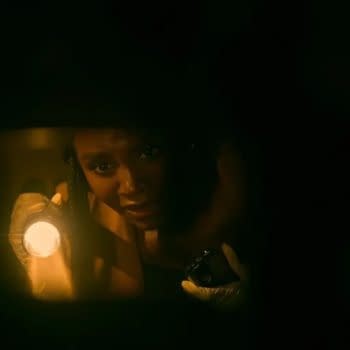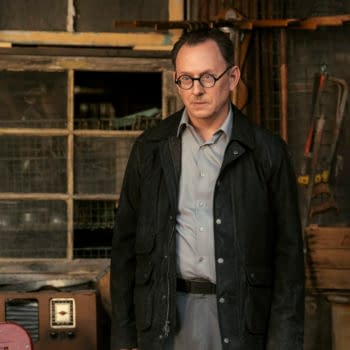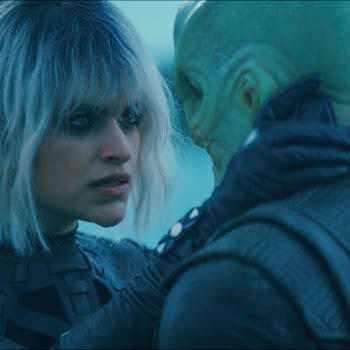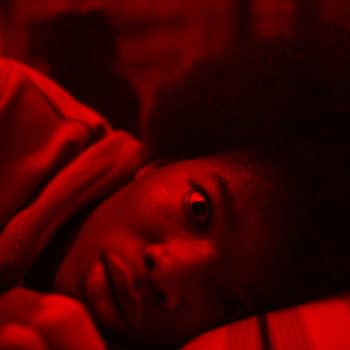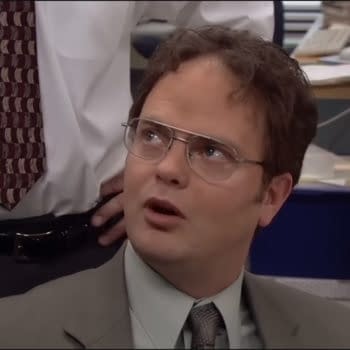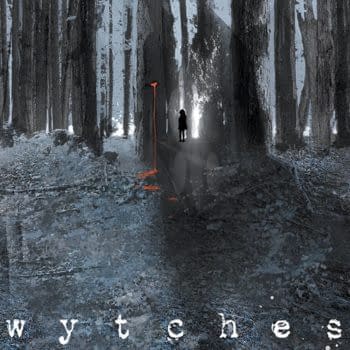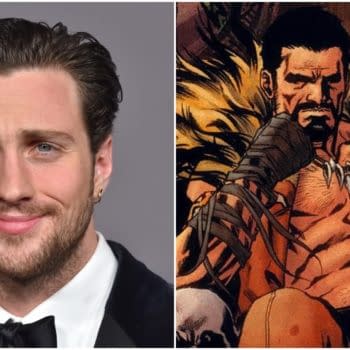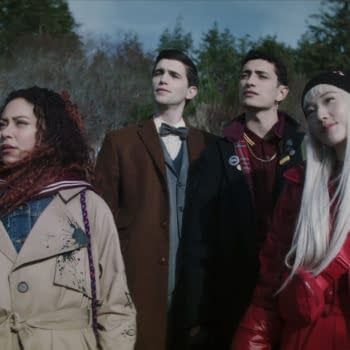Posted in: Disney+, Marvel, TV | Tagged: disney, Kasra Farahani, loki
Loki Prod Designer: He Who Remains Citadel Details You Might've Missed
When it comes to the spectacle that's Marvel's Loki, it separates itself distinctly from the other Disney+ series in the television zeitgeist of WandaVision and the more grounded Falcon and Winter Soldier. Not only do we look at earth destinations throughout time on Loki, but there's also dimensional and interplanetary travel involved that makes up the diverse settings of the series. Production designer Kasra Farahani spoke with Vanity Fair about the various worlds the series goes through from the Time Variance Authority, the Void, and the Citadel at the End of Time.
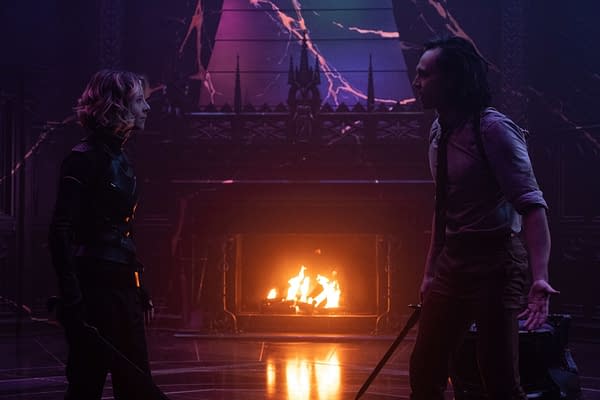
When it came to the Citadel that houses He Who Remains (Jonathan Majors) Farahani referenced some obvious source material. "This is one of those things we were designing, at least in a preliminary way, in the absence of a script," he said. "When we started, we had scripts for the first couple of episodes, but the others were just an outline. We knew it was the Citadel at the End of Time where He Who Remained was. There's some precedent imagery in the comics. It was basically a fortress on top of a tiny asteroid. So much of the goal of the show was to have the visual and narrative anchor of the TVA, but then to have to have this big universe with all these different locations that span a broad visual spectrum. We knew [the Citadel] was going to be the last location, so we wanted it to be particularly spectacular."
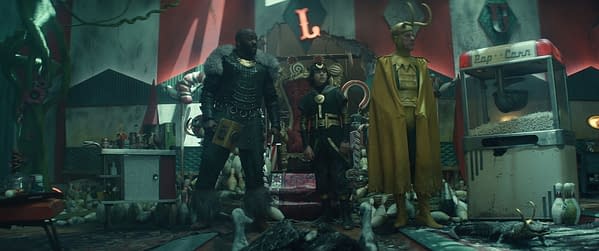
Farahani went further into detail. "We came up with the idea of doing something inspired by Petra in Jordan—so this notion that the architecture was carved in situ from the asteroid itself as opposed to being erected by bringing in different building materials," he continued. "Everything was going to be literally hewn from the asteroid itself. This is kind of a big commitment, looks-wise because, in order for it to work, there couldn't be [anything else] brought it. It would have been strange to have the architecture carved from this asteroid—which we pitched as black with a gold vein of an unknowable element moving through it—and then bring in wood and carpets and painting. It's such a flamboyant choice to carve the whole building out of this stuff, and the style, being inspired by Gothic revival, was going to be flashy. So we needed to commit to this idea that there are no other finishes in there."
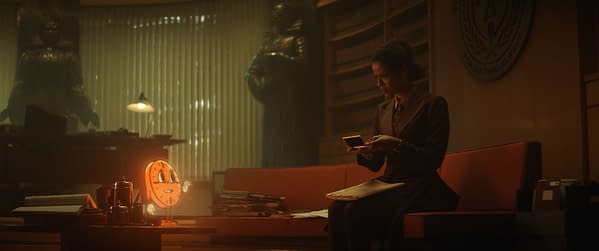
The production designer, who's also worked on Bliss and Earth to Echo broke down the use of Kintsugi that involves the use of gold or other metallic materials to repair broken ceramics that show all the cracks. "I became aware of [Kintsugi] throughout the process of figuring out what the paint finish was going to be for this material, but it wasn't a conceptual inspiration for us," Farahani said. "The inspiration was just this idea that, as science is showing more and more, there's this unfathomable cache of precious metals and rare elements on these asteroids. Also, the gold represented an unknowable kind of technology. Either science-based technology as we understand technology to be, or some sort of metaphysical system by which this place gets its significance."
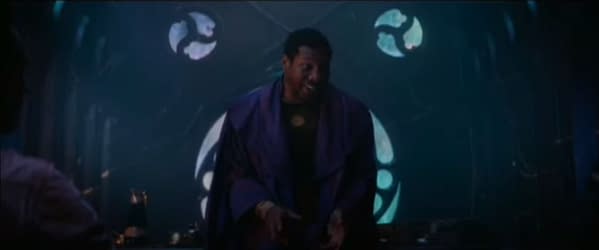
Farahani also explained how He Who Remains' influence on the building. "The biggest influence was probably Xanadu from Citizen Kane, and Hearst Castle as a result," he said. "This eccentric person rattling around this big Citadel. I pitched this idea that he'd retreated to the office at the time. The atrium, [where] you see the 13-foot-tall Sentinels of Time statues and the hall with the giant timepiece and the Timekeeper statues…there would be a sense that he had retreated from these places and they're in disrepair.
In terms of architectural style, we also took inspiration from Hearst Castle, [which] is this composite of different pieces of European architecture. We wanted the sense that [He Who Remains] had architecturally cherry-picked from assorted grand architectural styles. Some stuff, like the tessellated surfacing on some of the columns, is more unknowable and fantasy, to create this atmosphere of a self-edifying and grandiose space that is almost a project he got bored with." For more on the timekeeper's statues, inscribed Latin, Hall of Heroes, fireplaces, He Who Remains' office, a possible Eternals connection, and a Miss Minutes reference, you can check it out at VF.

Bleeding Cool TV on Instagram: For all of the stuff too random and bizarre to make the site, make sure to follow us on Instagram (with an official launch on June 19): Bleeding Cool TV (@bleedingcooltv).
BCTV Daily Dispatch: For a look at what's going on across the television and streaming landscape, sign up for Bleeding Cool's daily email round-up of the news you need to know here.






